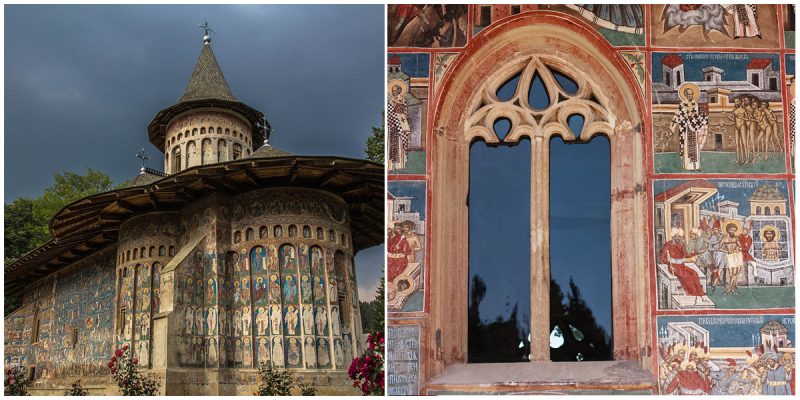The ‘Voronet’ is a Romanian medieval monastery, located in the town of Gura Humorului. It was constructed by Stephen the Great in 1488 to commemorate his victory at the Battle of Vaslui. The exterior frescoes of bright and intense colors have led to the monastery reaching world famous renown.
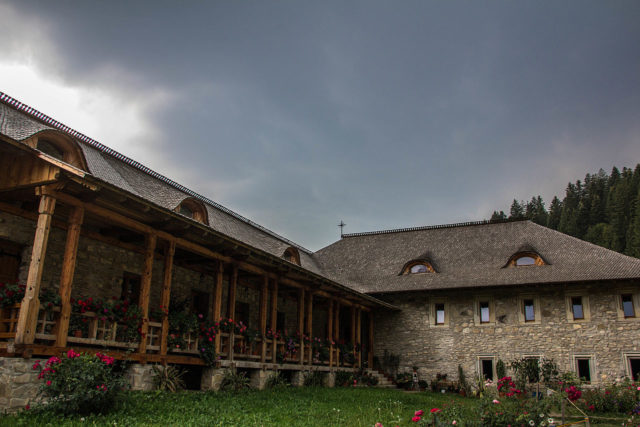
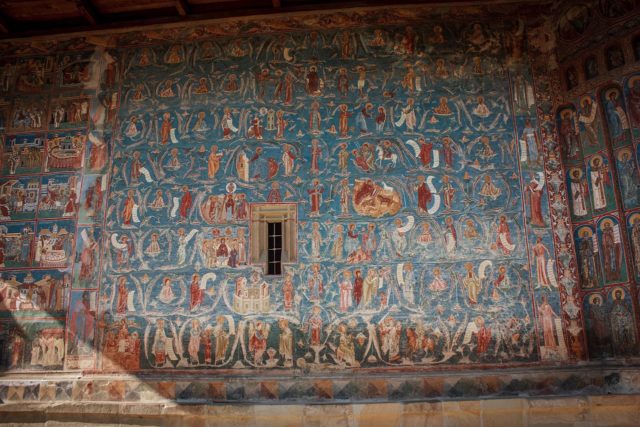
It originally took 3 months and 21 days to build the monastery, which features a ceramic decoration on the exterior. The church is one of the Painted churches of Moldavia, listed in UNESCO’s list of World Heritage sites.
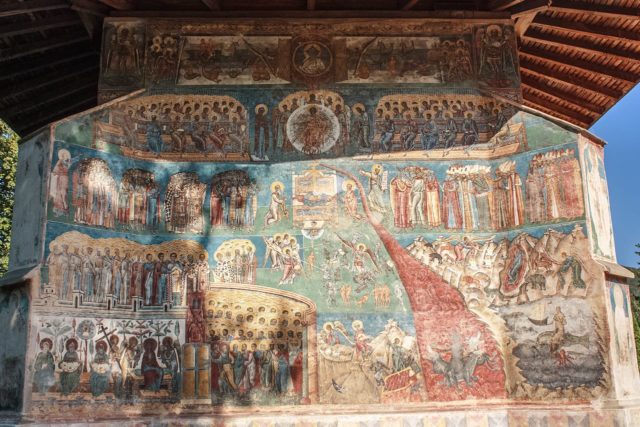
Across Europe the monastery is commonly known as “the Sistine Chapel of the East”. Of all painted monasteries many claim this one to be the most beautiful. This monastery offers an abundance of frescoes featuring an intense shade of blue commonly known as Voronet blue, of which the original composition has not been deciphered after 500 years.
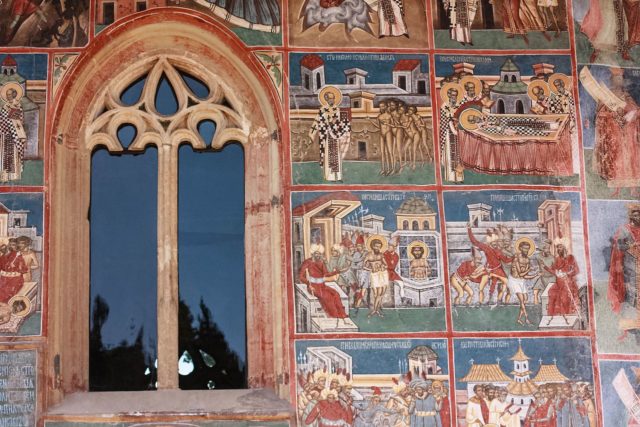
This monastery earned its place as the most famous church in Romania for containing the katholikon of Saint George. On each wall of the church are tall windows, adorned with flamboyant Gothic arches. The whole west façade is without any openings, which indicates the original intention of constructor Metropolitan Rosca was to have frescoes fitted.
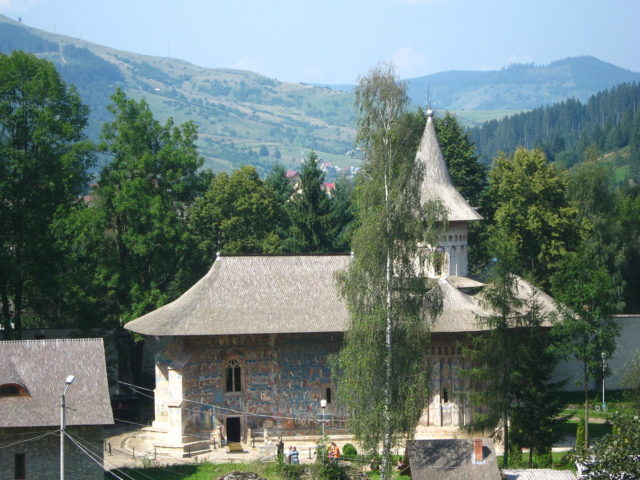
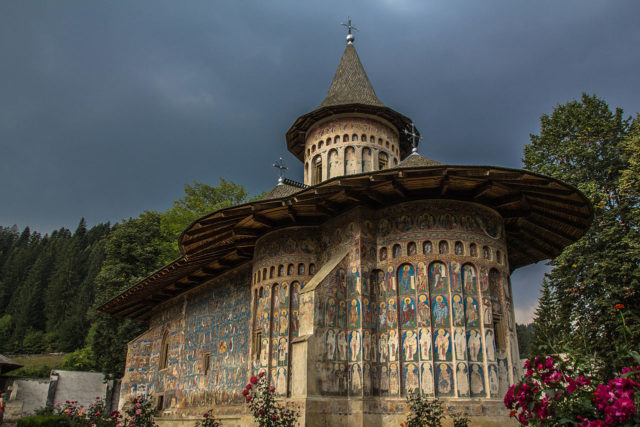
The exterior painting of the monastery was performed under the care of Rosca, who personally supervised its completion by anonymous monk-painters. On the outer walls of the church the Last Judgement is painted, along with the Tree of Jesse and portraits of ancient philosophers. On the south wall and near the entrance, the faces of Daniil the Hermit and Metropolitan Rosca are painted to preserve the memory of those who founded the monastery.
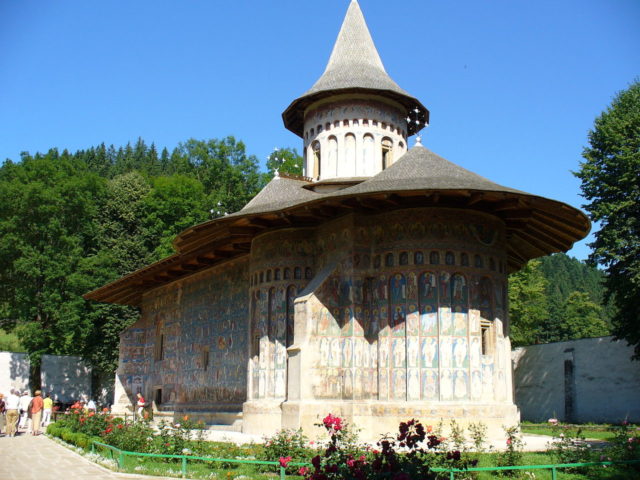
The Voronet Monastery can be seen as the most representative monument of medieval art in Moldova because of the overall artistic quality of the architecture and painting.
